Richard Koci Hernandez is a national Emmy Award winning visual storyteller and one of the world’s leading iPhoneographers. In this interview you’re going to learn more about Richard’s creative process and his views on iPhone photography.

Tell us a little bit about yourself and your iPhone photography.
I’ve been a “professional” photo journalist for more than 20 years. I’ve done work for just about every major publication and I’m currently an assistant professor of new media at the UC Berkeley Graduate School of Journalism. I fell in love with the iPhone as soon as it was first released. I was one of the geeks in line waiting to get my hands on one. I wanted it for its smartphone capabilities but soon discovered its power as a camera. And with every new generation of iPhone, the camera got better and better. Coupled with an explosion of applications, it blew the doors off what I thought my creative potential was as a photographer and opened up a new and exciting and immediate social world of photography to me.

If I had to describe my mobile photography in a few words, it would be dark, mysterious, with an analog feel. I walk and wonder in the classic tradition of street photography capturing unguarded moments in black and white in public spaces. Since I am an admirer of the past, present and future, I love for my digital images to have an analog feel, so you will find me consistently and regularly adding a bit of grain or grunge and faux analog borders to my images. I want you to view my images on your iPhone or other mobile device and get the impression that you’re looking at a real photograph that was potentially found in a gutter and run over by a car a few times.
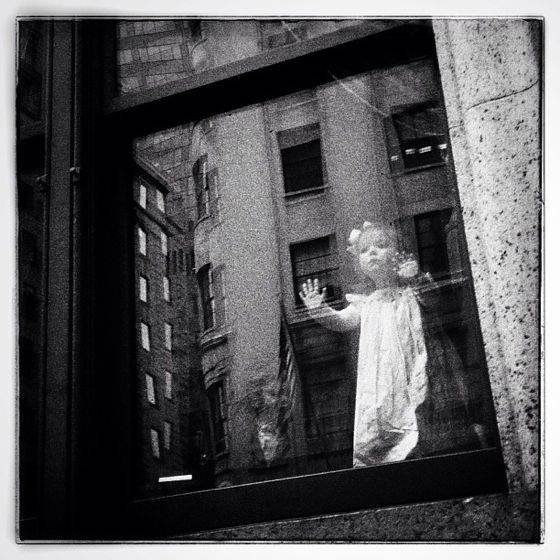
What attracts you to the iPhone as opposed to a more capable digital camera?
Its immediate shareability and connectedness. With a quick tap, I can snap an image and just as quickly share that image with the world, and a few minutes later open a conversation about that image. Pretty powerful stuff in my opinion. Over the last few years no other capture device offered such shareability and connectedness to social media platforms. That is now changing of course as cameras become connected.
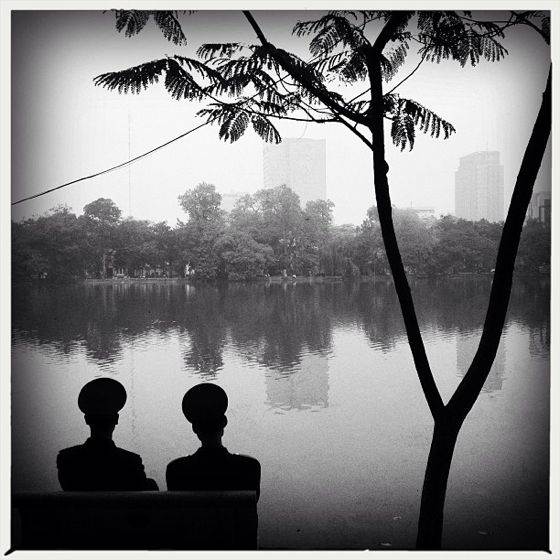
Tell us about how you normally take photos. Do you look for particular scenes or subjects, or do you just walk around trying to capture whatever you see?
Actually a little bit of both. I particularly love walking and wondering what is around the next corner. A perfect subject or a perfect shaft of light… The thrill of the hunt and the unknown is certainly exciting and generally my approach. But I have a particular fascination if you will with men in Fedoras, so if I spot one I’m bound to “follow” that subject until I find the right situation to photograph him in.

Last year you did an experiment in which you replayed a day in your life through more than 60 photos. How could you find so many unique scenes and subjects in just one day?
This didn’t seem particularly special to me in terms of the number of scenes because I feel my subject matter is simply everyday life that presents itself to us, and on any given day there is probably double or triple that amount of visual goodness in front of us. All we have to do is pay attention and snap away. I’m always on the hunt for beauty in the mundane.
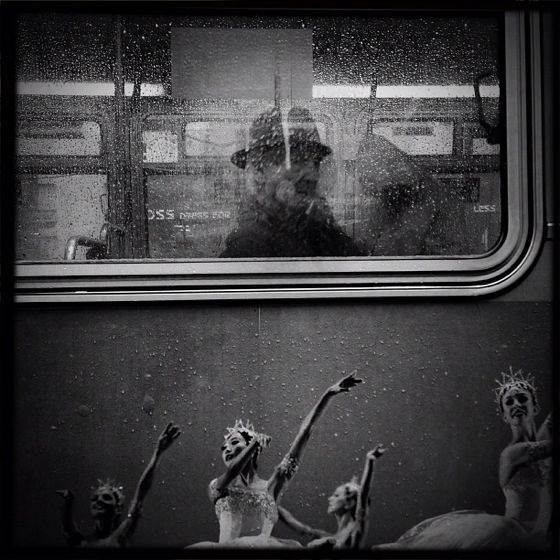
Your photos are known for their emotional impact and the story they tell. What are the key ingredients to telling a story in a photo?
In my opinion, that’s an easy answer: the key ingredient is mystery. As funny as it sounds, the true storytelling potential of any image sits in the heart and mind of the viewer, not the photographer. No matter what my intention is or the real situation of the photograph, the viewer is actually the one in control of the ultimate meaning and context. So if I bring just enough mystery, just enough of the right elements into the frame and make it fairly mysterious in terms of what’s really going on, then the viewer fills in all the blanks and potentially tells a much better story than the reality of the situation.
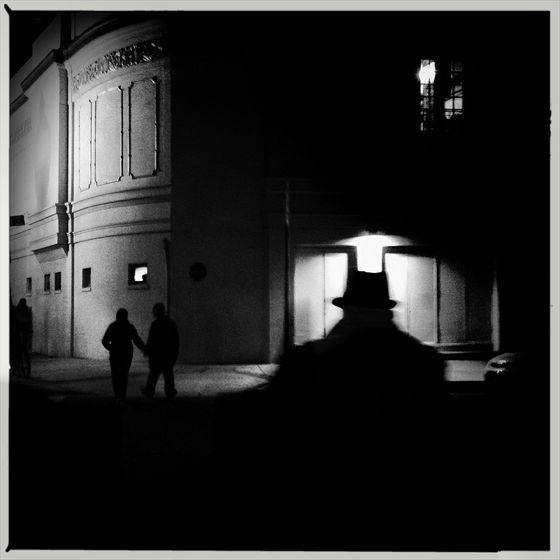
What advice do you have to novice iPhoneographers who want to start taking more creative photos?
Seriously, practice, practice, practice. It sounds so elementary and when people often give this advice we let it wash over us and pay no attention to it, but the reality is that it IS the key to mastery. Take action, shoot lots and lots of photos and learn from your mistakes, and make a concerted effort to seriously navel-gaze and think about the style and form in which you want to visually communicate. Let it be true to your heart and soul and the Muse will do the rest.
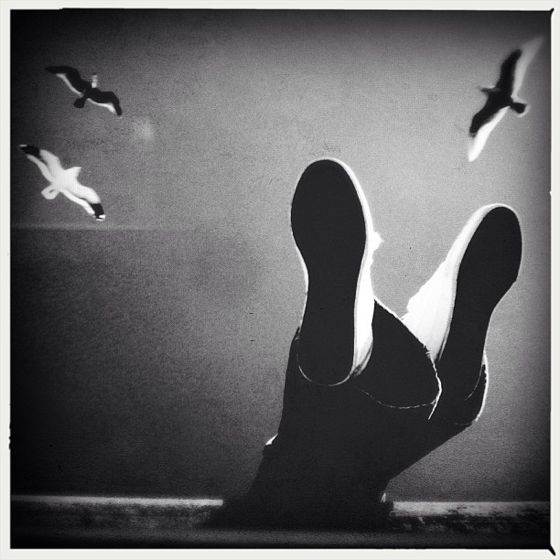
You’ve been on Instagram since the very beginning, and you’ve seen it grow from a niche product to a massive social network. Where do you think this medium is headed in the future?
Well, not exactly the beginning. I posted my first photo in October 2011. But you’re right, I have seen it grow and the one thing I learned a long time ago is to avoid embarrassment by trying to predict the future. I’m such an optimist and I believe the future of visual technology and photographic sharing networks will only continue to blossom and grow as we become a more visually rich and communicative society. As for specifics, who knows?
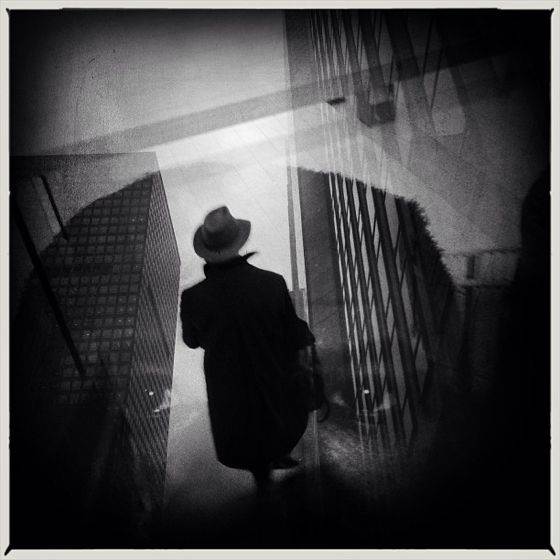
Can you describe the story and editing process behind your favorite iPhone photo?
I know that this might sound snobbish, but I really cannot point to a favorite photo. If I honestly and truly had a favorite photo that completely satisfied me, I would probably stop taking pictures. It’s the hunt and the anticipation and expectation of actually taking a satisfying photo that keeps me coming back more, so in essence I hope I never take my favorite photo. So let me stop being snobbish for a minute and answer your question about a recent photo and tell you a little story behind it.
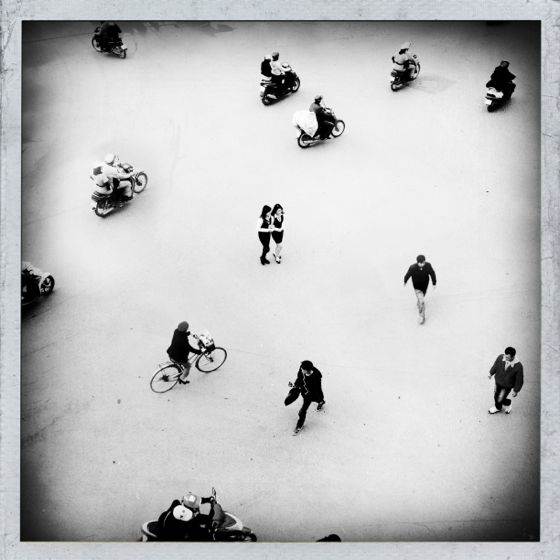
In January, I was lucky enough to find myself in Hanoi, Vietnam, shooting a personal documentary project. It was my first time in Asia. I was completely in thrall with the city and the people, its heartbeat and pace. There was truly order in all of what seem to be the chaos on the streets. I found myself drinking coffee and having a smoke on the fourth floor of an outdoor patio and literally entranced by the delicate dance of pedestrians, motorbikes and cars beneath me. Needless to say I pulled out my iPhone and snapped away. For me, the resulting image is a perfect emotional Momento and I certainly presented it on Instagram in a style that I’m very comfortable with. It was shot with an app called Kitcam, then I added some grunge and frames from other apps. Which ones exactly I cannot currently remember, but I feel like I achieved my goal of having the potential viewer feel like this photo was found on the ground and run over by a few motorcycles.

Where can we find out more about your iPhone photography?
You can find me @koci on Instagram.


Great interview. Really enjoyed the questions, Mr K’s responses and the brilliant visual stories you chose. Thanks for investing your time into our iPhone photography development.
Thank you David, glad you enjoyed the interview!
great!
Glad you like it, Koci is a great master!
Thoroughly enjoyed this interview.
Happy to hear that Linda! Koci is a brilliant artist.
Absolutely inspiring article. Hey does anybody know how I can get that ghostly light-leak style effect of picture two? So beautiful and tasteful.
Looks like a Mextures edit to me, but it could be another app.
Emil you did not ask about the apps that he used or anything related to that. I am very eager to know.. Please help..
It’s not about the apps but the content of the photos, and Koci proves that more than anyone else 🙂